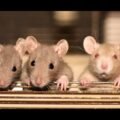Who doesn’t love a good bottle of wine? The wine industry is beginning to update its methods. Gone are the days of hand-pressing (or foot-pressing) grapes to produce the annual crop. Now, many vineyards are turning to technology, like AI and robotics, to make wine-making more efficient.
Background
Last year, the International Organization of Vine and Wine (OIV) gave a presentation about the latest and upcoming trends in wine. This organization looks at the scientific and technical methods of grapes, raisins, wine-making, and other wine-based products. Within their presentation, the OIV shared a recent study they had done, where they surveyed wineries in 18 different OIV member countries. Their study also included detailed interviews with 21experts in wine technology. From their study, the OIV was able to predict some of the ways that technology will impact the industry.
Analysis
One of the biggest trends the survey found was the use of electronic or e-labels on wine bottles. These e-labels gave more information about the wine than a normal label, such as which vineyard and in what season the wine was produced. Depending on the e-label, these labels can also give more in-depth nutritional facts and transparency about the wine trade. Some companies are already experimenting with e-labels that include augmented reality (AR), so you could be somewhere else when you sip your glass of wine, preferably a warm Italian vineyard.
As of October 2021, a European e-label platform, called U-Label, was born out of Brussels. This platform allows for more wine-drinkers to have labels in their own language, or to be able to scan a label and the language changes. This platform is currently designed for wine and other alcohol, but may expand in the future to include other goods. An e-label platform could also help make the global trade of goods and services more efficient and sustainable, as it would decrease the need for paper records.
Another rising wine trend is the implementation of AI. From helping to monitor crops to wine selections, AI is slowly making its way into the wine process. Already there are companies that are using AI algorithms to act like sommeliers. Companies like Sippd and Tastry help users discover new tastes in wines thanks to AI. Sippd specifically offers an app that phone users can use to create a tasteful pairing of wine and food on the go.
Outlook
AI is not just being used for critiquing taste, but ways in the future, be paired with e-labels to help make the wine trade more transparent and efficient. Members of the OIV are hoping to use these technologies to also make the wine industry more sustainable as a whole. With climate change wreaking havoc on many wine-producing areas, technology like AI could help predict better areas to grow wine, or give better suggestions for increasing crop products. As the benefits of technology are being seen, the wine sector is working hard to make sure they don’t get left out.
Kenna Castleberry is a Staff Writer for the Debrief and the Science Communicator at JILA (a partnership between the University of Colorado Boulder and NIST). She focuses on deep tech, the metaverse, and quantum technology. You can find out more about her at her website: https://kennacastleberry.com/
